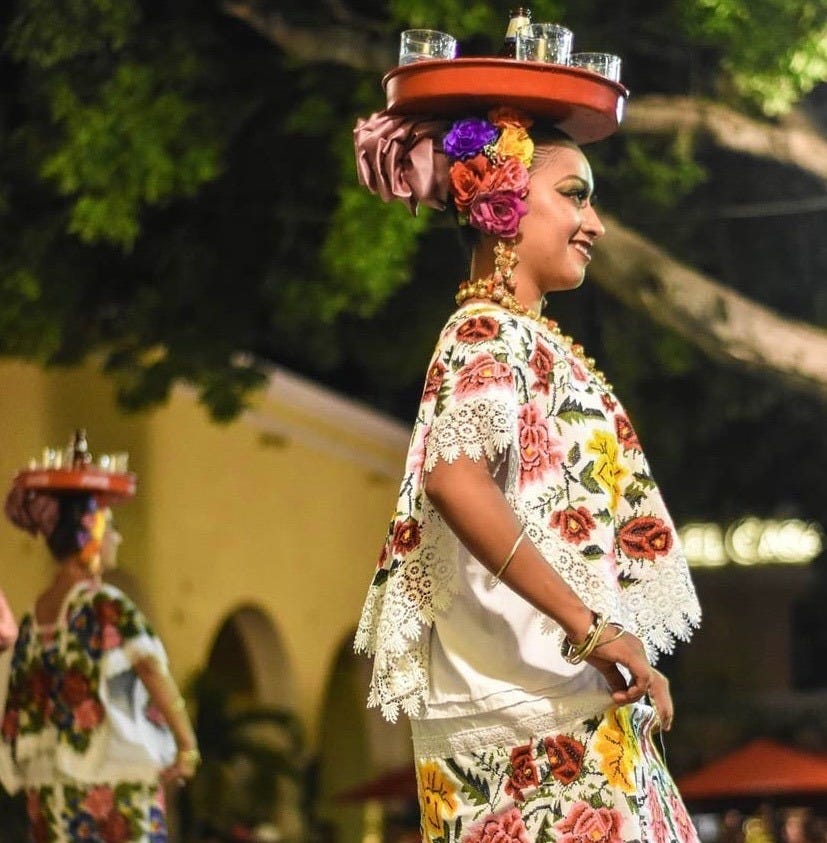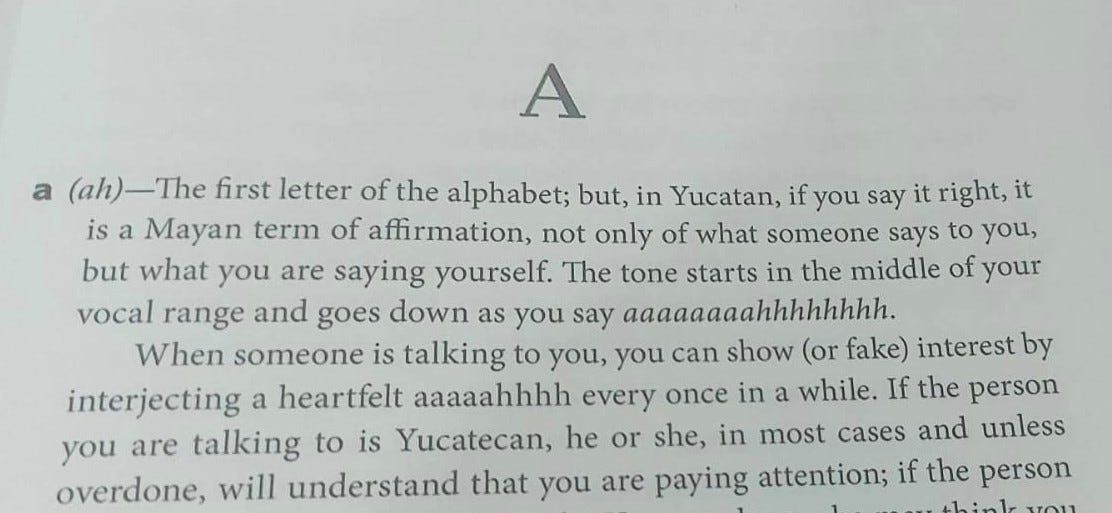Small gestures
What was that, again? Italians and Mexicans say much with their hands and body language. Learning the gestures can help you communicate. But doing them yourself? Awkward...

KRIS: Ciao, Ann. We are now into the hot days of summer here in Northern Italy, definitely the time to kick back and relax. With the heat, I haven’t the energy to do much, and that includes diligently studying Italian.
ANN: Buen dia, Kris, coming to you live from my hammock. Have you heard the one about knowing if you can live in Yucatán? Turn your oven up to 500 degrees, open the door, and stick your head in. If you can handle it, bienvenidos a Yucatán!
I jest, and not very well, it’s also too hot here today to generate much creativity. I do think the sultry days of summer serve as a good reminder to relax and let our brains fully process and make meaning of our new language skills. And to realize you probably have learned much more than you realize. Some chilled wine helps.
KRIS: I have to say that I’ve been so focused on learning the spoken language of Italy since moving here, that I haven’t really mastered the communication that comes with body language. As you know, Italy is the land of communication through body language, most importantly hand gestures. Is Mexico similarly reliant on nonverbal communication? My inquiring mind wants to know.
ANN: Yes, for sure, although I believe that Mexicans gestures are more subtle than those used by Italians. I do know I miss nonverbal cues because I don’t understand them. As the years have passed, I find myself more in tune with them, and have folded some of them into my general understanding of Spanish and cultural norms here.
KRIS: We were recently at a neighbor’s apartment for afternoon coffee and snacks and she made the index finger drilling into the cheek gesture to indicate how delicious her favorite restaurant is. Other places were delicious but her gesture told us that this particular restaurant was the ultimate in good food. Of course, don’t go a bit too far up from the cheek or your gesture could mean “it’s crazy.” Probably worth noting that distinction, huh?

ANN: Mastering the subtlety of gestures is a skill! As much as I would love to express myself in more fluent Spanish with accompanying gestures, I am not sure that day will come. The gestures we have learned over our lives are hardwired into our muscle memories. I do talk with my hands but often don’t realize I’m doing it, nor what my hands are doing. I guess they are speaking English along with my Spanish.
KRIS: I know there are many hand gestures and non-verbal ways of communicating here in Italy. I really don’t try to imitate any of them. It is simply not in my cultural background to use many hand gestures when communicating so it seems unnatural and forced. It is not so much that I worry about making a mistake with a gesture as I feel out of my depth when coupled with verbal interactions. Basically, I have enough trouble trying to speak Italian—best not to try to pantomime it as well.
ANN: I’d say the goal for learning your new language (and yes, learning it, even if it’s just the basics, is non-negotiable) is to familiarize yourself with the most common gestures if you can. As you become more comfortable with the language, go ahead and throw in a gesture. If anything you’ll bring some smiles to the locals you’re conversing with.
Shrugging seems to be big here. One I particularly like is one that is done when things are ridiculously frustrating or stupid. It’s kind of a soft shrug with a sigh, the eyes turned heavenward, palms open. It says it all to me. Spanish is much more geared to accepting that shit happens, and a lot of it is out of our control. For example, in English we would say “I dropped a glass.” It translates in Spanish to “Se me cayó un vaso,” which translated literally is “the glass fell from me.”
There are also words and idioms that are specific to a region and make no sense anywhere else. Have you noticed any of those in your area? They can definitely be lost in translation.
KRIS: There are indeed many differences across regions of Italy in terms of idioms and gestures. Italians have many ways of saying something. A very common phrase that really threw me the first time I heard it has to do with wishing someone good luck. The straightforward and easily translatable way is to say “buona fortuna” to someone you wish to have good luck. But it is also quite often said as “in bocca al lupo” which literally translates as “in the mouth of the wolf.” This phrase is then offered in reply, “crepi il lupo!” which translates as “may the wolf die.” Why and where this phrase came from is not entirely clear but it has been around Italy for a very long time.
ANN: One of the best things I’ve found to help me with my Spanish here is a little book, The Modern Yucatan Dictionary, written by Ralf Hollmann, a Canadian writer who has spent many decades here. The book is described as “a no-holds barred guide to more than 300 unique words not taught in classrooms.”
The book is a great primer on the Yucatecan culture, and the numerous Mayan words that still are used. But I must admit it’s the very first entry that I have used the most: Ahhhh.
Why? It’s actually a Mayan word to show affirmation for what someone is saying, and what you are saying. For me it has been invaluable talking to the neighbors. I all too often lose the thread of the conversation, either because I’m processing it too slowly or I missed a verb or two. A timely injected “Ahhhhh,” nodding my head in affirmation of I often-know -not -what, buys me time to figure it out. Ít also gives me some street cred as a sympathetic listener and good neighbor.
KRIS: Italians communicate with gusto. Eye contact is essential when talking and indicative of respect and full engagement. Not to mention the hand gestures: Last week I watched a middle-aged man walking down the street with his cell phone on video mode, as he spoke and gestured to someone on the other end. Obviously, what he had to say required both verbal and non-verbal content. I was rather sorry I wasn’t close enough to hear what he had to say with such vigor.
ANN: He probably couldn’t articulate his thoughts without using his hands! I may not grasp all the gestures, but they definitely help me gain context for what’s being said. For this reason understanding what someone is saying on the phone to me is really difficult sometimes. I know this is quite common with language learners. And saying “Ahhhh” doesn’t work when someone is asking you a question.
KRIS: Italians are very keen on physically touching each other when greeting or saying farewell. Even casual acquaintances are very likely to embrace you and kiss one of your cheeks and then the other when they meet you. Farewells seem to warrant even stronger embraces and the ritual cheek kissing.
ANN: The cheek kissing is my favorite gesture, I think. I miss it when I am away. When I first came here, having people swoop in and kiss my cheek startled me a little. Plus I was very awkward at it. Do I turn my head? Do I kiss their cheek? Both cheeks?
I had a very embarrassing cheek kissing incident a number of years ago. I turned my head during a cheek kiss and ended up in a full on liplock with the cheek kisser, who happened to be my landlord. He was quite startled but went with it, figuring if this crazy American wanted to passionately kiss him, ni modo, pues.
KRIS: It is not at all uncommon to see men of all ages hug each other with warmth and true affection, which by American standards can only lead to ???? It must have been hell for Italians when the COVID lockdown broke their chain of physical contacts. It is their cultural nature to show affection, angst, empathy, frustration, and the whole gamut of human emotions through their body language and contact with each other.
ANN: That is the same here. Men have no weird puritanical hang ups about showing affection to their male friends and family members. Or dancing. I’ve told Mexican men here that many American men don’t dance. They look absolutely shocked.
KRIS: A few months ago I had a bad fall while walking downtown. I hit the cobblestones hard enough to gash my cheek, but fortunately not to break any bones. Strangers on the street immediately came to my aid and helped me to a nearby bench, where I sat badly shaken and dabbing the blood that trickled down my face. Suddenly a woman with bandaids and antiseptic appeared from her shop across the street. She asked if she could help me and then ever so gently applied the dressing.
I will always remember that small gesture of kindness from a stranger. But oddly enough, what I most recall from our interaction was the gentleness and caring of her physical touch as she applied the bandaid to my throbbing cheekbone. One of so many small gestures I have found here in Italy that restores my hope for our world.
ANN: Ahhhhh. This transcends language barriers, yes? The grandest gesture of them all, human kindness. And a definite lesson for us as we struggle to master a new language. Your vocabulary may suck and your gestures may be off, but if your heart and compassion shine through, you’ve said it all.








